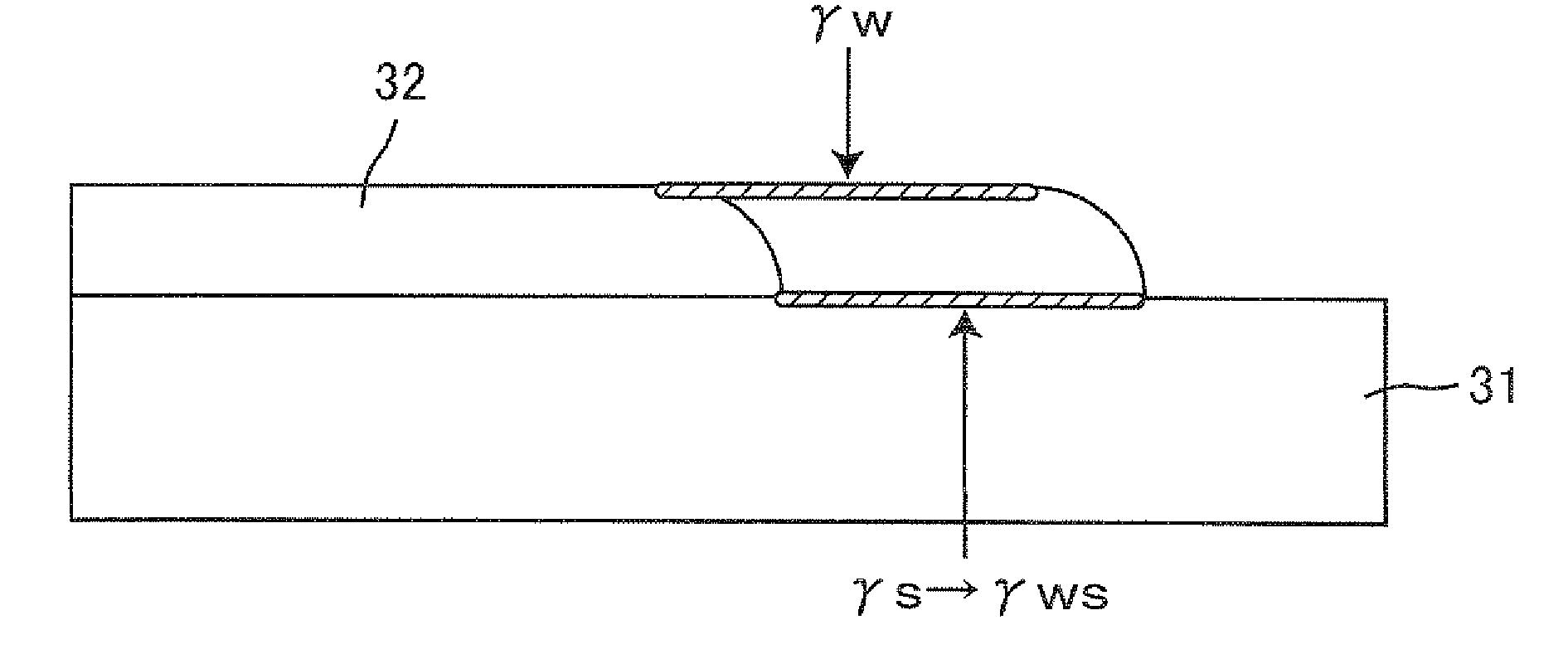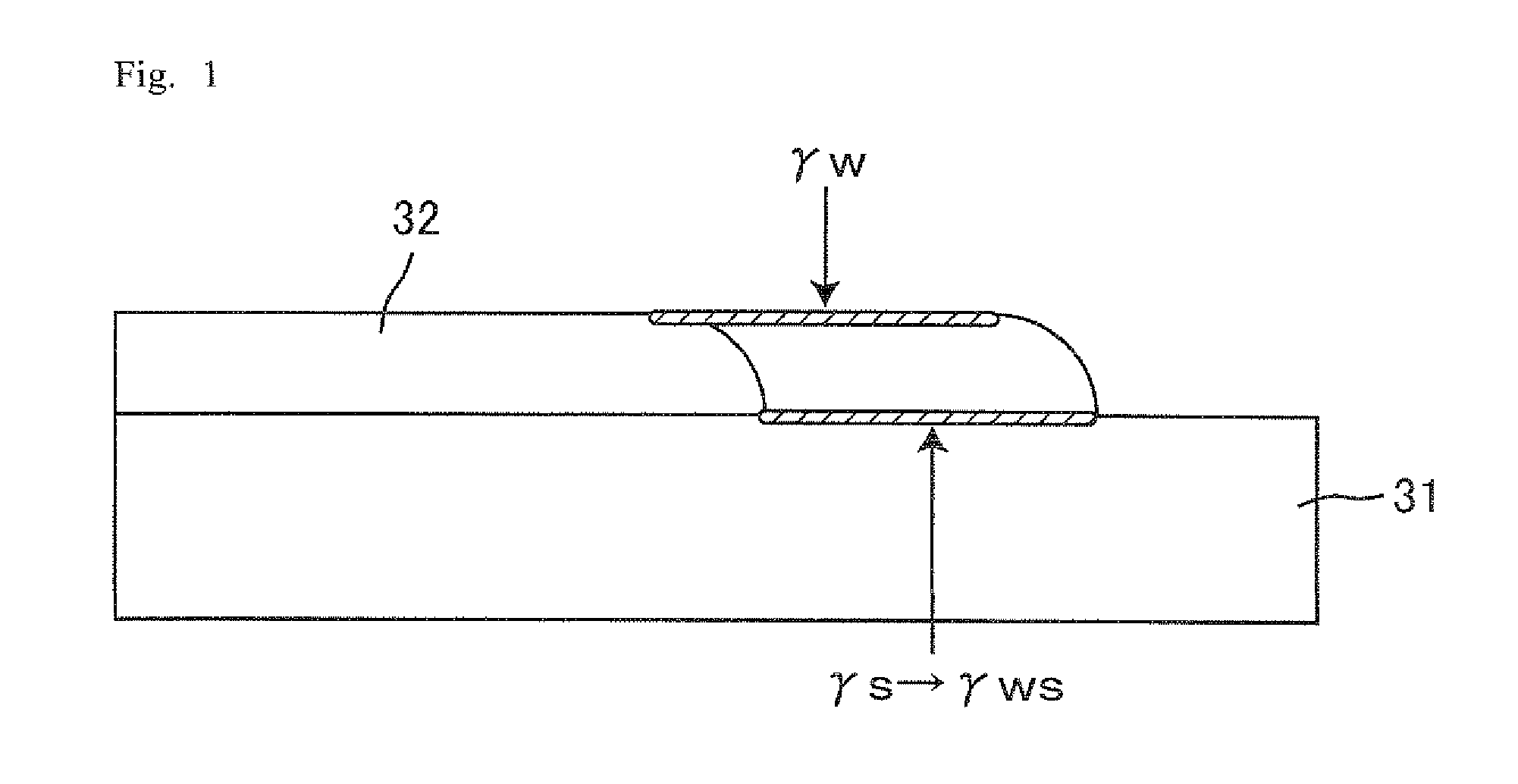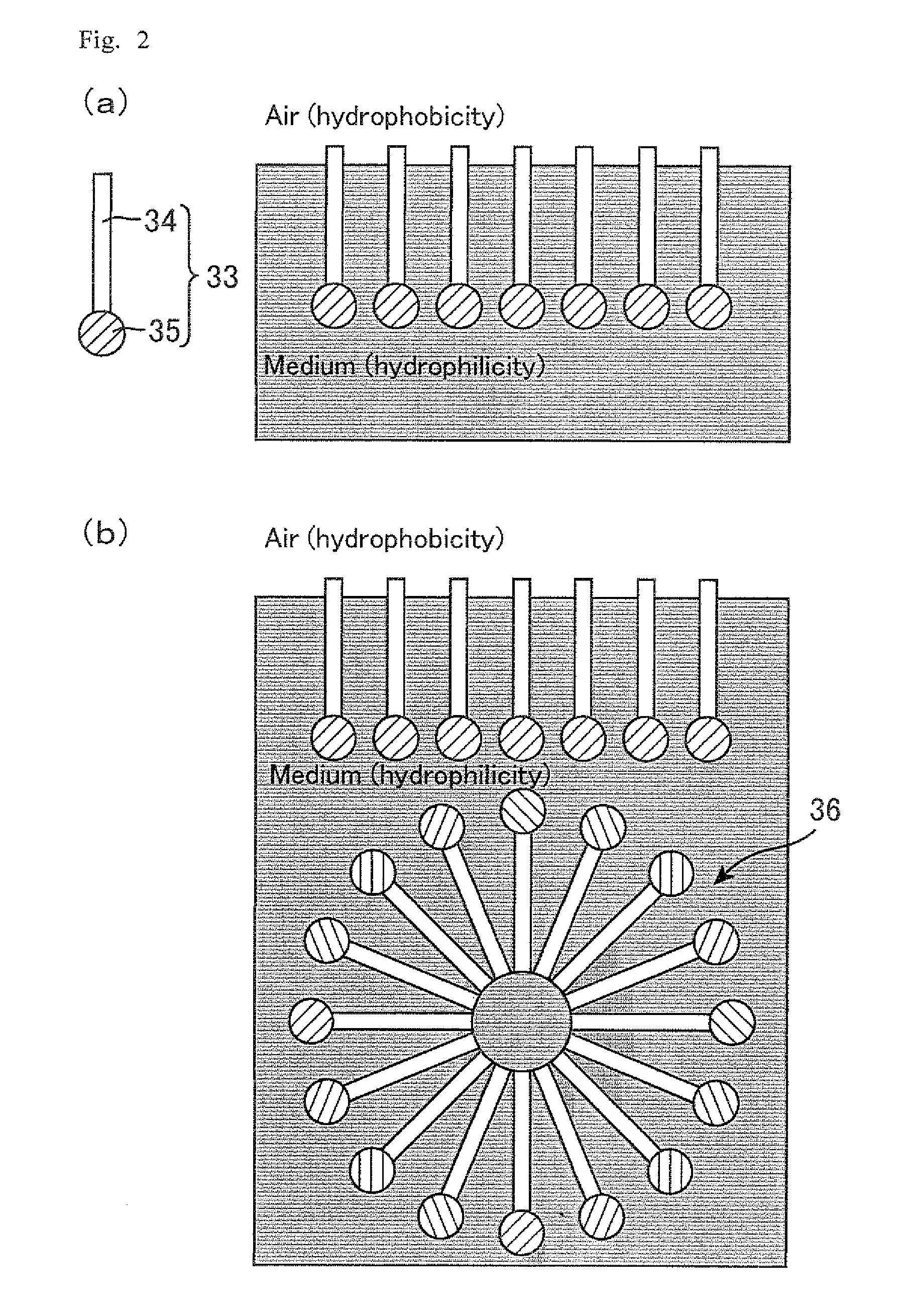Composition for forming liquid crystal alignment film and liquid crystal display device
a liquid crystal alignment and liquid crystal display technology, applied in papermaking, non-fibrous pulp addition, instruments, etc., can solve the problems of significantly reducing the display quality of the display panel, uneven display, poor coating properties of inkjet printing, etc., to effectively drive the liquid crystal display device, excellent viewing angle characteristics, responsiveness and light transmittance
- Summary
- Abstract
- Description
- Claims
- Application Information
AI Technical Summary
Benefits of technology
Problems solved by technology
Method used
Image
Examples
embodiment 1
[0121]The present Embodiment is mentioned in the following order: 1. alignment film material (material for forming a liquid crystal alignment film); 2. preparation method of alignment film; 3. composition for forming a liquid crystal alignment film; and 4. basic operations of liquid crystal display device.
1. Alignment Film Material
[0122]The alignment film material (material for forming a liquid crystal alignment film) of the present Embodiment includes a polymer (copolymer) essentially including a first constitutional unit and a second constitutional unit. The first constitutional unit starts exhibiting a property of controlling alignment of liquid crystal molecules by photoirradiation. The second constitutional unit exhibits a property of controlling alignment of liquid crystal molecules regardless of photoirradiation. More particularly, the first constitutional unit has a side chain including a photofunctional group, and the second constitutional unit has a side chain including a ...
example 1
[0194]In the present example, the ink was used whose solvent system was N-methyl-2-pyrrolidone / butyl cellosolve / 4,6-dimethyl-2-heptanone / diisobutyl ketone=50 / 43 / 2 / 5. This satisfies the conditions below. The proportion of sum of the γ-butyrolactone and the N-methyl-2-pyrrolidone to the entire medium is 40 to 58.95% by weight. The proportion of the butyl cellosolve to the entire medium is 40 to 58.95% by weight. The proportion of the 4,6-dimethyl-2-heptanone to the entire medium is 0.05 to 9% by weight. The proportion of the diisobutyl ketone to the entire medium is 1 to 19.95% by weight. In addition, the ink was set to have a solid content of 2.8% by weight, a surface tension of 31 mN / m at 24° C., a viscosity of 4 mPa·s at 24° C., and to show the liquid spreading of 18 mm in a liquid spreading test and the liquid shrinkage of 70 nm in a liquid shrinkage test. In inkjet printer used here, the nozzle pitch of heads was 0.75 mm, the number of nozzles was 64, and its stage velocity was s...
example 2
[0196]A liquid crystal display panel of the Example 2 was produced in the same manner as in Example 1 except that the ink used here had a solvent system of N-methyl-2-pyrrolidone / butyl cellosolve / 4,6-dimethyl-2-heptanone / diisobutyl ketone=50 / 43 / 1 / 6. In addition, the ink was set to have a solid content of 2.8% by weight, a surface tension of 31 mN / m at 24° C., a viscosity of 4 mPa·s at 24° C., and to show a liquid spreading of 17 mm in a liquid spreading test and the liquid shrinkage of 75 nm in a liquid shrinkage test.
PUM
| Property | Measurement | Unit |
|---|---|---|
| Temperature | aaaaa | aaaaa |
| Length | aaaaa | aaaaa |
| Fraction | aaaaa | aaaaa |
Abstract
Description
Claims
Application Information
 Login to View More
Login to View More - R&D
- Intellectual Property
- Life Sciences
- Materials
- Tech Scout
- Unparalleled Data Quality
- Higher Quality Content
- 60% Fewer Hallucinations
Browse by: Latest US Patents, China's latest patents, Technical Efficacy Thesaurus, Application Domain, Technology Topic, Popular Technical Reports.
© 2025 PatSnap. All rights reserved.Legal|Privacy policy|Modern Slavery Act Transparency Statement|Sitemap|About US| Contact US: help@patsnap.com



